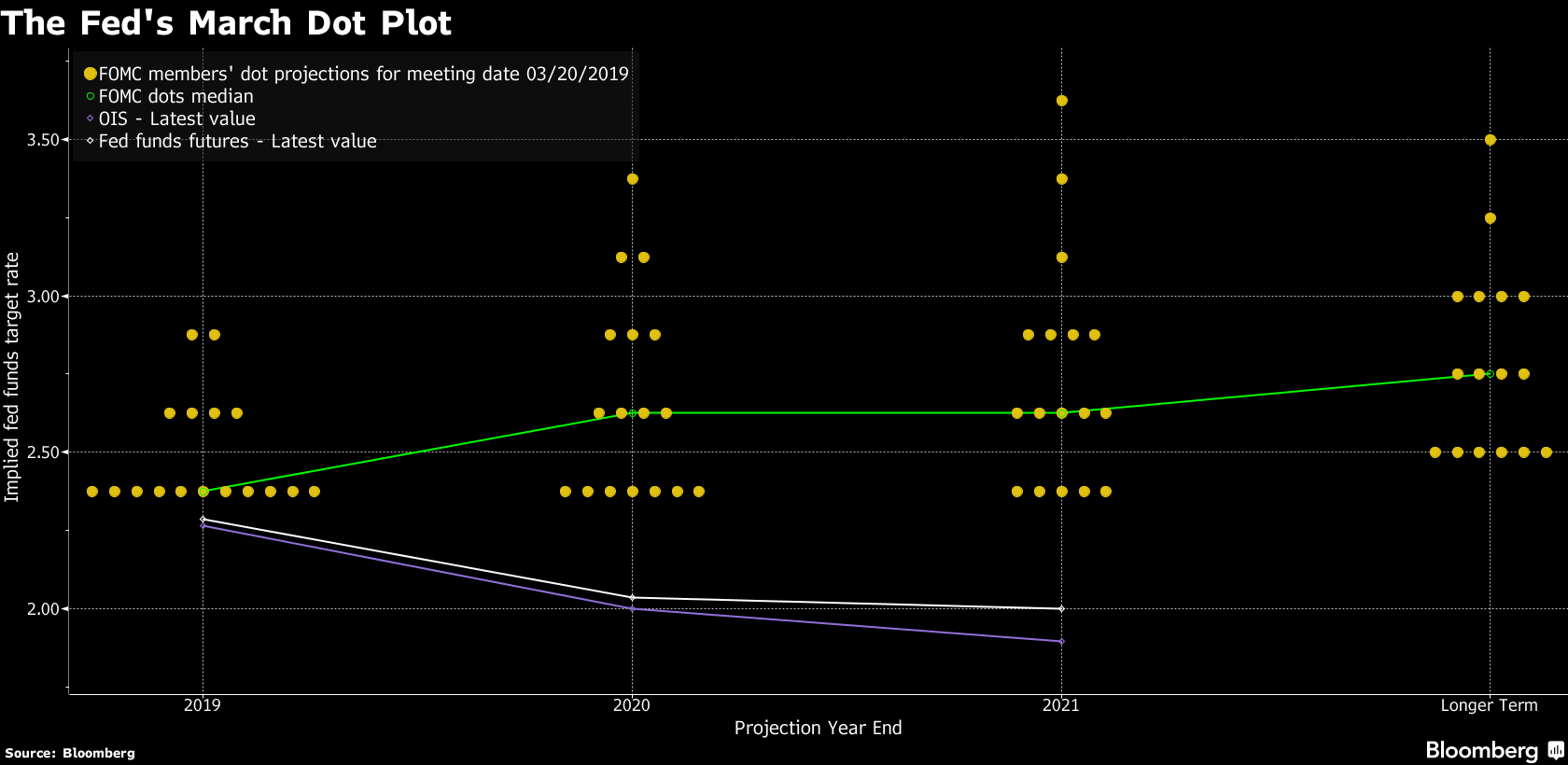Jun 19, 2019
U.S. Federal Reserve seen signaling cut by losing patience
, Bloomberg News
U.S. Fed 'under considerable pressure' to trim rates: Market analyst
Facing pressure from Wall Street and President Donald Trump, Federal Reserve Chairman Jerome Powell and his colleagues may be running out of patience.
The Federal Open Market Committee is likely to hold interest rates steady on Wednesday while opening the door to a cut -- by dropping its commitment to being “patient’’ in its policy statement, according to Bloomberg survey of economists. The decision will be announced at 2 p.m. and Powell will hold a press conference 30 minutes later.
“It will be a tap dance on the high wire,’’ said Steven Skancke, chief economic adviser for Keel Point Capital in Vienna, Virginia. Powell will stress that the economy is still fundamentally strong and moving in the right direction, but that the Fed will remain vigilant for changes that might arise, Skancke said.
Fed officials face a quandary at this meeting because the economic data has been supportive of their forecasts to hold interest rates steady but risks to the global outlook are growing.
While the FOMC in March projected no change in rates this year, and a quarter-point hike in 2020, markets have ramped up bets on easing and Trump has repeatedly called for a cut. Fed funds futures on Tuesday showed around a quarter point of easing is priced in by the end of July, and more than half a percentage point was indicated by the end of 2019.
Market Disconnect
“The disconnect between the Fed and the market has gotten very big,’’ said Ethan Harris, co-head of global economics research at Bank of America Corp. in New York. “They need to open the door part-way to a rate cut. The door is closed right now. They need to create optionality.’’
Treasury yields fell Tuesday after European Central Bank President Mario Draghi suggested that more stimulus would be needed if that region’s economic outlook doesn’t improve. And while signs of a thaw in the fractious U.S.-China relationship helped put a floor under yields, the 10-year rate remained within a few basis points of a 21-month low.
With that back drop, here’s what to look out for in the Fed’s decision:
Less Upbeat Statement
The FOMC statement may tone down descriptions of the current economy and job market, described as “solid’’ and “strong’’ in May. One possibility is to emphasize data dependence, mirroring Powell’s June 4 language in Chicago where he said the Fed is “closely monitoring’’ trade negotiations and risks to the U.S. outlook, and “will act as appropriate to sustain the expansion.’’
“The dropping of patient would signal the FOMC stands ready to support the economy should recent risks manifest,’’ said Sarah House, Wells Fargo Securities senior economist. In its place could be language saying the Fed will “monitor global economic and financial conditions’’ as it determines what adjustments “may be appropriate.’’
The committee may reduce its estimate of inflation for this year, while leaving unchanged estimates for unemployment and growth -- even as risks have grown and a weak jobs report last month created uncertainty about the economic outlook.

Dot Plot
The median FOMC participant is likely to project no change in rates this year, as was the case in March, according to the Bloomberg survey. St. Louis Fed chief James Bullard is the only policy maker to publicly endorse a cut. It would take nine officials lowering their projections to lower the median estimate. Given his views, Bullard could dissent from keeping rates steady this week.
“While a downshift in a handful of dots may not be enough to adjust the median forecast, a dovish shift in the dots would at the very least indicate a growing possibility of a rate reduction sooner than later,’’ said Lindsey Piegza, chief economist at Stifel Nicolaus in Chicago.
The press conference could be challenging. Powell will need to both express some confidence in the current economy while being open to a cut if necessary. In past press conferences, he’s resisted using the word cut, and he may not want to give any signals.
What Our Economists Say
“Fed officials are no doubt disconcerted by recent signs of dimming global- and domestic-growth prospects, cooler inflation and mounting evidence of trade-war casualties. Still, we believe they will avoid fully pivoting from "patient" to proactive until there is more data at hand.”
-- Yelena Shulyatyeva and Carl Riccadonna, economists
Powell is likely to be asked about a recovery in financial conditions. Interest-rate hawks, such as Kansas City’s Esther George, caution low rates can fuel asset price bubbles. The S&P 500 is close to its all-time high and Powell recently warned about rising business debt, which could cause firms to face “severe financial strain’’ in a downturn.
“The Fed is fairly likely to cut in the second half of the year as an insurance policy,’’ said Jonathan Wright, a professor at Johns Hopkins University and former Fed economist. “ Of course a worry with all this is that asset valuations will become even more lofty.’’
--With assistance from Benjamin Purvis.
